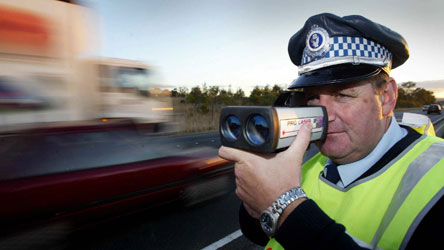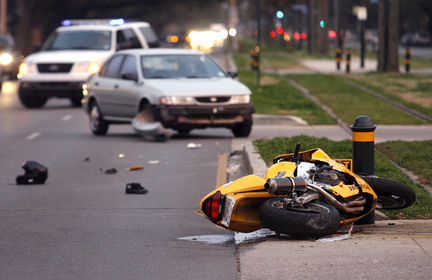Police in all states are conducting annual Christmas/New Year blitzes and using the inevitable high road toll caused by massive volumes of holiday traffic to trot out the tired old line about speed.
Australian and NSW Motorcycle Council executive, and former police driving instructor Peter Ivanoff says police references to the proportion of accidents caused by speeding is “absolute crap”. (For example, NSW police are referring to 40% of fatal crashes being caused by speeding.)
“They don’t know what the real causes of crashes are because ‘cause’ isn’t even on the agenda when crashes are ‘investigated’ by police,” he says.
“Their claimed speeding statistic of 40% for fatalities (or whatever it is from month to month) is the result of their own extrapolations of corrupted data and the application of their own contrived causal criteria.”
STATISTICS
Statistics vary from state to state as police perform massive radar and drug/alcohol testing blitzes as millions make their way to and from holiday destinations.
NSW figures as of day 11 of their blitz were 10,120 speeding infringements, 475,091 breath tests for 640 charges, 961 major crashes and 11 fatalities.
Peter says the figures don’t match up wth police claims about the causal effect of speed in fatal crashes.
“The 10,000-plus speeding drivers they have caught is just the tip of the iceberg and yet with 11 fatalities, well you can do the maths for yourself,” he says.
“If exceeding ridiculously conservative speed limits was really our biggest killer, we should be seeing hundreds and hundreds of fatal crashes week after week – but we don’t – not even remotely close.”
PATROLS V CAMERAS
The statistics of speeding offences always sound alarming, but there is no indication of how many of these were simply people drifting a few kilometres over the speed limit and being snapped by a “safety camera” hidden at the bottom of a hill.
Police also trot out some extreme examples of excessive speedsters they have caught, such as a 38 year old Sydney motorcyclist who was caught doing 157km/h on the Princes Highway.
However, that rider was caught by the highway patrol, not by a “safety camera”. Surely the answer to excessive speed then is more police patrols, rather than cameras which tend to snare the accidental speeder, rather than the idiot road racer.
INATTENTION
While police continue to deploy more cameras, Peter, who has recently retired as aN an Academic Director in CSU’s School of Policing Studies, says the biggest killer is not speeding, but inattention, for which police seem to have no plan to counteract.
“More and more speed cameras will simply catch more and more motorists exceeding speed limits and if the claims of road authorities were true, as we have more and more speed cameras, the road toll should declining accordingly, in a virtual linear fashion – it isn’t.”



